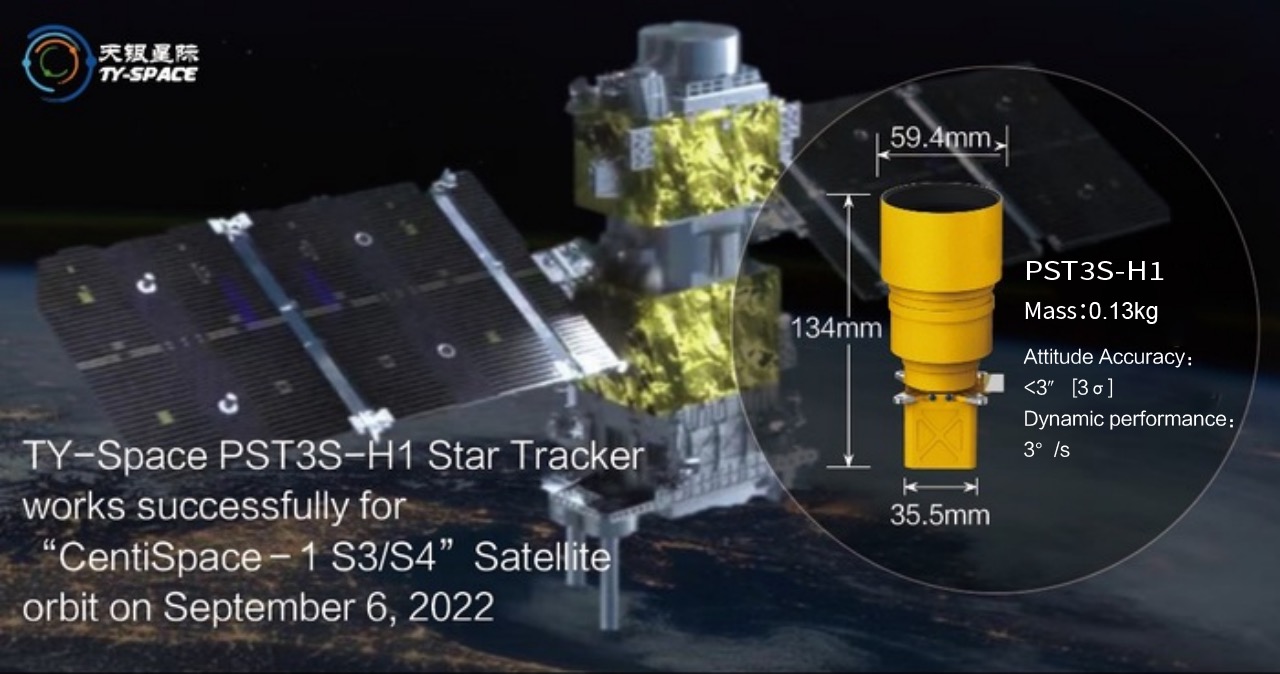
The photosensitive detector Star1000 of APS CMOS star tracker integrates AD sampling and other signals, and separates external control signals from it. Almost all of the noise in this way comes from the APS CMOS sensor itself.
The photosensitive detector Star1000 of the star sensor adopts APS CMOS technology, with low filling coefficient and quantum efficiency, as well as high dark current noise and fixed mode noise.
This is one of the main shortcomings of Star1000 compared to CCD star sensors. For high-precision measurement equipment such as star sensors, noise is crucial for star point extraction and system accuracy. Therefore, analyzing the noise situation of APS CMOS photodetectors and adopting reasonable noise suppression and filtering methods plays an important role in improving the overall level of APS CMOS star sensors.
To accurately extract star points from APS CMOS star sensors, it is necessary not only to ensure the sensitive base, but also to ensure that the background noise (Rlow Noise) on the ADS CMOS sensor is sufficiently low.
For sensors with large arrays such as the Star1000, fixed pattern noise (FPM) has a significant impact on star point extraction. When star points are imaged on different pixels, there are differences in sensitivity and background noise. To ensure effective star point extraction, the influence of these fixed mode noise must be overcome. Due to the discreteness of photon flow and sub flow, the imaging of the same star point on the same pixel on the photosensitive detector will generate random fluctuations, resulting in quantum fluctuation noise – shot noise. In summary, system noise is the combined effect of the above three situations.
Background noise includes temperature noise, reset noise, follower noise, readout noise, Vbias transistor noise, amplifier noise, and A/D noise.
For APS CMOS sensors, background noise is mainly the superposition of temperature noise and reset noise,
1) Temperature noise is a type of Gaussian white noise that exists at all frequencies. Due to the influence of bandwidth and resistance, temperature noise is mainly concentrated in the amplification circuit of the system, and is relatively small in the switching circuit. Usually, the higher the temperature, the greater the temperature noise. The temperature noise of different APS CMOS sensors varies.
2) Reset noise refers to the process of resetting the APS CMOS sensor to a specified reset voltage before imaging, which is generated by charging the pixel photodiode through a metal oxide semiconductor field-effect transistor (MOSFET) switch T1.
Shot noise is a random white noise caused by the discreteness of electrons themselves. On APS CMOS photodetectors, shot noise mainly consists of two parts:
1) The inherent shot noise caused by the dark current of CMOS photodetectors;
2) The dispersion of photons and the randomness of photon arrival at the photodetector cause photoelectron scattering noise.
Unlike the two types of noise mentioned above, mode noise is not random noise and has a certain pattern. Mode noise exhibits a strong spatial noise property that does not change over time and remains essentially unchanged between different image frames, making it impossible to eliminate mode noise by averaging between image frames.
The current mode noise mainly includes:
1) Pixel Fixed Pattern Noise (PPPN),
Pixel fixed mode noise mainly refers to the noise that appears on different pixels in the absence of light. It is mainly caused by the size of the detector, doping of semiconductors, MOSFET channel characteristics, and pollution during processing. On CMOS image sensors with large arrays, fixed mode noise is further divided into regional and entire image planes.
2) Column Fixed Pattern Noise (CFPN),
On APS CMOS image sensors, there is usually a column amplifier, and the non-uniformity of the column amplifier inevitably brings fixed mode noise. Column fixed mode noise is generally greater than region pixel fixed mode noise.
3) Photo Response Non-Uniformity (PRNU),
Pixel response non-uniform hook noise, like pixel fixed mode noise, is independent of time but directly related to the signal, mainly generated by photodiodes. Due to reasons such as materials, processes, and processing, different photodiodes have different responses to photons. Due to the direct relationship between the non-uniformity of pixel response and the signal, standard deviation or the ratio of peak to peak to average signal is usually used in the expression
4) Dark Signal Non-Uniformity Noise (DSNU).
Dark signal non-uniformity noise and pixel response non-uniformity noise are similar, mainly influenced by process and dark current. The size of the dark signal mainly depends on the integration time, so in many cases, the non-uniformity of the dark signal is expressed in the form of a time variable.
The APS CMOS sensor Star1000 based on photodiode type adopts dual correlation sampling, which can eliminate small mode noise.
From the perspective of system noise analysis, the main source of star sensor noise is still mode noise, mainly including mode noise of column amplifiers, non-uniform dark current response noise, and fixed mode noise of pixels themselves. Increasing the integration time will linearly increase the non-uniformity of the signal and dark current, while column fixed mode noise, pixel fixed mode noise, and background noise will not change, which can improve the signal-to-noise ratio to a certain extent. However, when the signal is very weak (similar to the non-uniform noise caused by dark current), increasing the integration time cannot improve the signal-to-noise ratio of the system. In this case, the signal-to-noise ratio can only be improved by increasing the lens aperture and signal energy.
The main noise source of APS CMOS sensors is the fixed mode noise of the sensor, which is mainly caused by the inconsistency of CMOS technology and the integration of amplifiers and other circuits on the CMOS sensor. Relying solely on signal-to-noise ratio for star point effective pixel extraction not only loses the system’s sensitivity, but also many weak signals, which to a large extent cannot meet the system requirements of star Trackers.
Send us a message,we will answer your email shortly!